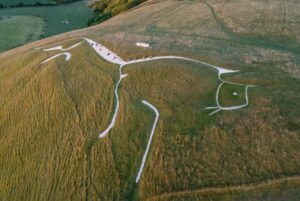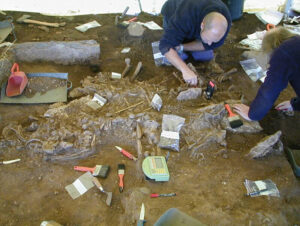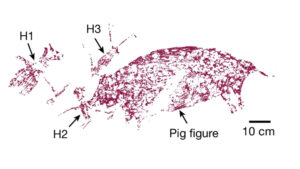The mysteries surrounding ancient monuments like Egypt’s pyramids have long led to far-fetched conspiracy theories.
For example: How could a 4,500-year-old civilization have moved 2.3 million stone blocks weighing more than two tonnes each?
The answer, it turns out, is not alien visitors. Actually, the Egyptians probably used a river that doesn’t exist anymore.
That’s the conclusion of new research published this week by the Proceedings of the National Academy of Sciences. Scientists have long surmised that ancient Egyptians did not haul the massive stones over land. Instead, they likely used a river to transport them.
Today’s Nile River is many kilometres away from the pyramids, but that wasn’t always the case.
Researchers found evidence of a long-lost Nile tributary they’re calling the Khufu branch. It ran directly to the site of the pyramids and offers the first viable explanation of one of their most enduring mysteries.
By analyzing desert soil, the scientists unearthed the hidden history of the last 8,000 years of the Khufu branch. They now posit that this lost river — which disappeared in 600 BC — made Egypt’s ancient architecture possible.
“It was impossible to build the pyramids here without this branch of the Nile,” Hader Sheisha, an environmental geographer and one of the study authors, told The New York Times.

An artist’s rendering of the long-suspected Khufu branch of the Nile River. Credit: Alex Boersma/Proceedings of the National Academy of Sciences
Ancient papyrus gave the clues
Scientists found their first lead back in 2013 when they discovered papyrus fragments at an ancient harbor near the Red Sea.
The scrolls date back to the reign of Pharaoh Khufu, the second king of Egypt’s Fourth Dynasty. Giza’s Great Pyramid was built as his grandiose tomb.
These ancient documents recount the efforts of men moving limestone blocks up the Nile River to Giza, where Egyptians used them for the Great Pyramid’s outer layer.
The accounts offered crucial proof of the theory of river transport. Now they needed to find evidence that the Khufu tributary actually existed.

The Great Pyramid of Khufu, the oldest and largest of the three pyramids in the Giza complex. Photo: Shutterstock
Soil reveals river’s location
Researchers drilled down into the desert near the discovered scrolls and along the most likely route of this ancient river.
More than nine metres below the surface of the desert, they finally found what they were looking for: a hidden history beneath the sand.
Sheisha and her team analyzed the soil samples in a French lab, where they identified evidence of 61 plant species, including ferns and palms. The soil also contained pollen from cattails and papyrus, suggesting an aquatic environment.
In fact, water covered Giza entirely about 8,000 years ago. Then northern Africa dried up, leaving the Khufu branch behind as a perfect tool for constructing the pyramids.
The river offered water sufficiently deep for navigation, but low enough to not cause flooding issues.
Sheisha wasn’t surprised, she told Popular Science, but simply amazed by these “clever old kingdom’s engineers who could thoroughly harness their environment and the Nile dynamics for turning the impossible into reality.”
Yet this river shortcut didn’t last forever. Egypt became drier, and the river slowly disappeared. When Alexander the Great conquered Egypt in 332 B.C., people had already converted the area of the Khufu branch into a cemetery.
While scientists have finally solved this corner of the puzzle of the pyramids at Giza, don’t fret over the monoliths’ enigmatic status. Many mysteries remain unsolved.






